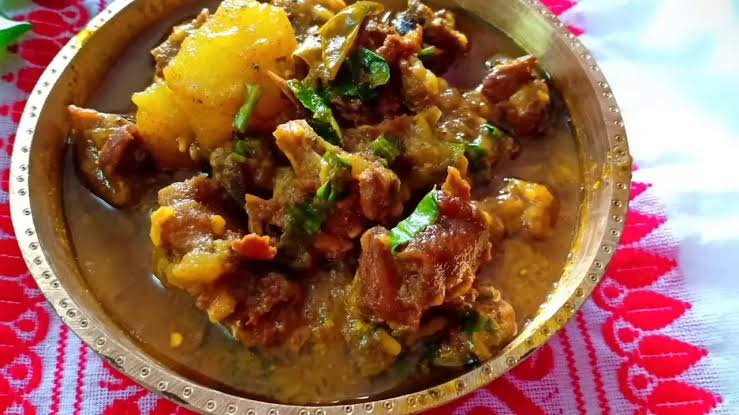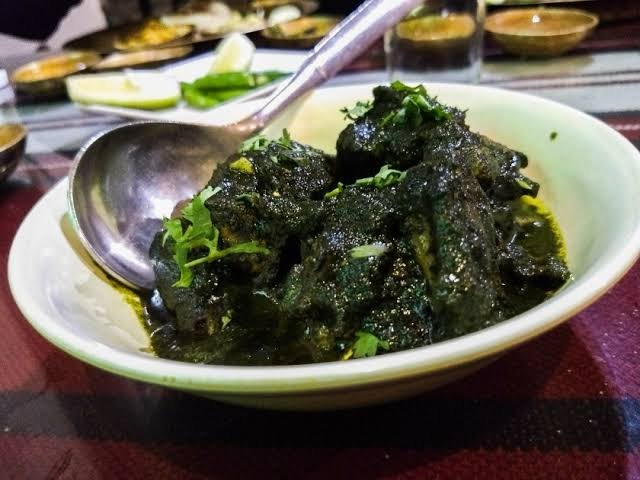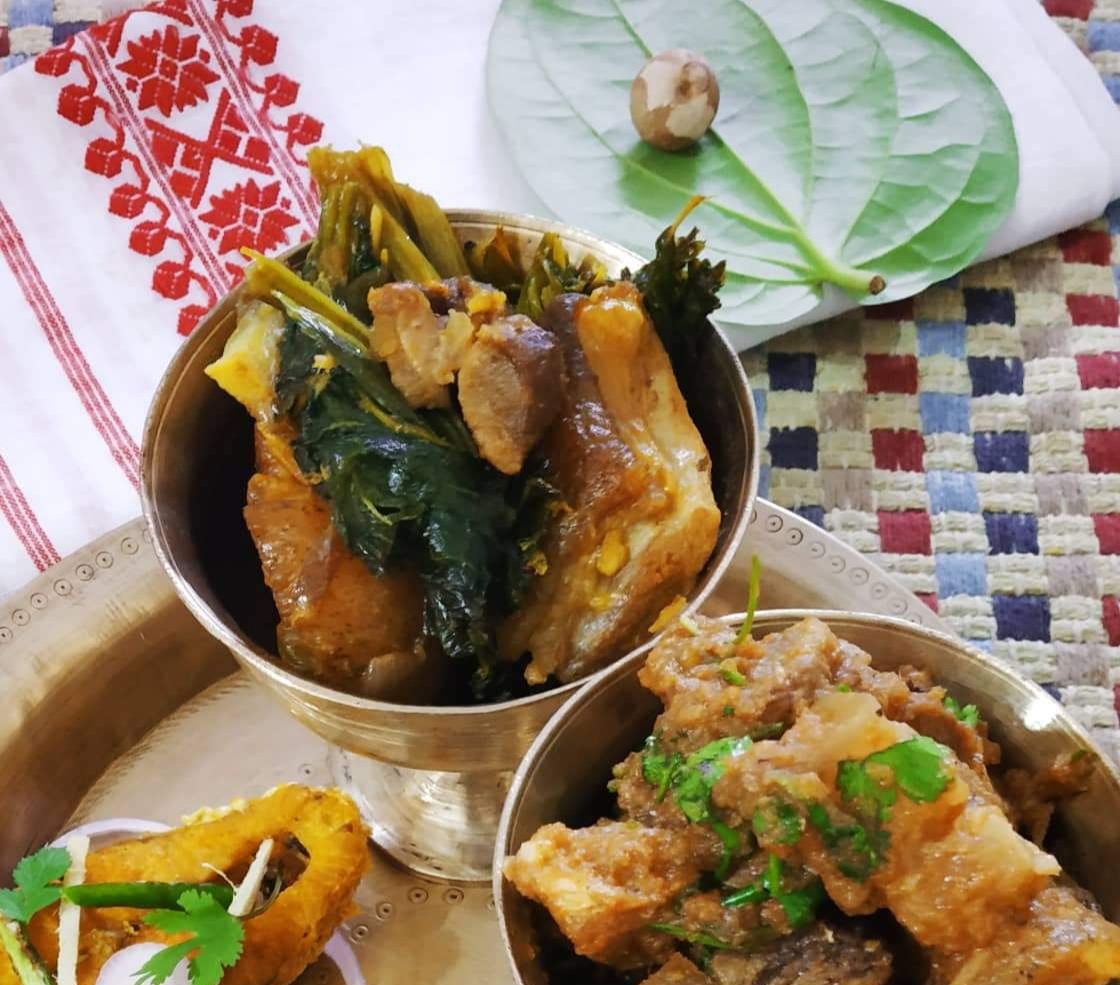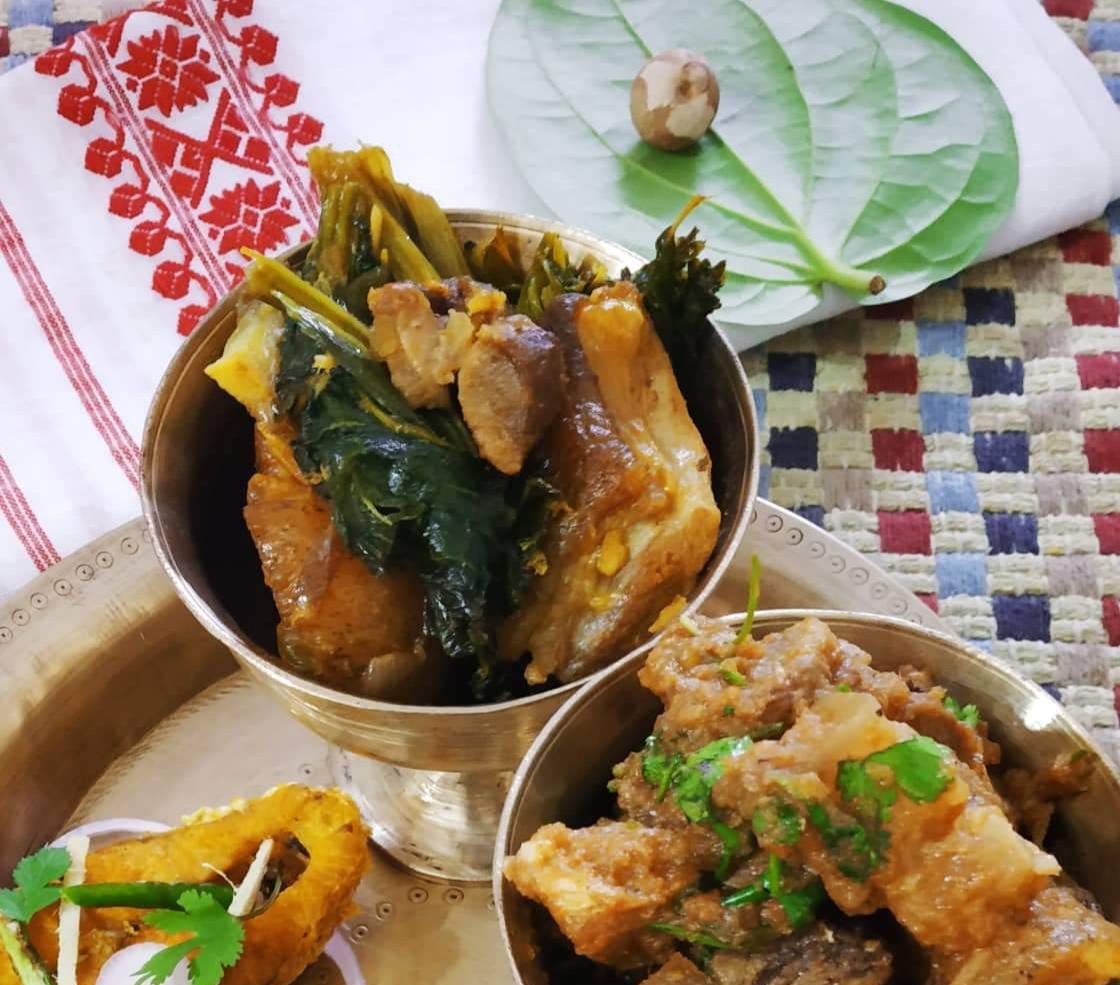Assam is an ethnically diverse state, multi-cultural and multi-lingual due to which the food culture here is also diverse.
Assamese cuisine has so much to offer that you need to spend quite a few days to satisfy your gastronomic appetite, if you have one. But trust me when I say that there’s literally no end to this food marathon.
However, there are a few signature ethnic delicacies which you should never miss while in Assam.
Assamese Cooking Style
Assamese cuisine is characterised by less oil, no added spices, cooking over fire and to a great extent fermentation. The only spices used are ginger and garlic, and some local wild herbs. So basically Assamese food is a straight out of home kitchen kind of experience, with a zest of raw smoky flavours.
Prepare yourself for a mouthwatering read about the top 10 Assamese delicacies.
Top 10 Assam’s favourite dishes
Haah Mankho Kumura

Source
Haah mankho kumura or duck with ash gourd is a quintessentially Assamese delicacy you should never miss.
The meat tastes best when cooked over firewood as it gives a smoky flavour to the tender juicy meat. The ash gourd melts making the gravy extra rich.
Duck meat tastes best around December- January because it becomes more fatty during this time.
Gahori Bah Gaj
Gahori bah gaj or pork with bamboo shoot will give you the typical ethnic feeling. This is a purely boil dish with loads of flavour.
Like every other ethnic Assamese dish this too sounds simple but the taste is definitely something to pay for.
Aamlori-Tup aru Koni
Aamlori-tup aru koni or larvae of weaver ant fried with eggs is an exotic Assamese delicacy consumed during Bohaag Bihu by many ethnic communities.
This is usually consumed on Goru bihu day along with poita bhaat (leftover rice kept overnight in water) and 101 xaak (101 types of vegetables cooked like a hot pot).
Kukura Mankho Til diya

Source
Kukura mankho til diya or country chicken cooked with black sesame seeds is another very rich dish in terms of flavour.
Essentially ethnic, this is not a very common dish but prepared by few tribal and ethnic groups in Assam.
Khar
Khar is actually a kind of alkali/potash obtained from bhimkol, which is a variety of banana.
The banana peel is stored over months, then burnt in fire and water is then added to this burnt mixture. After leaving it for a while the mixture is strained and what we get is called khar.
This is added in small quantity with either black gram or mustard greens or raw papaya which gives you a very unique taste that will linger on your tongue for a long time.
So the potash is called khaar and taking into account what it has been added to we call it accordingly. Like amita khar if added to raw papaya, lai xaak khar if added to mustard greens, etc.
Gahori Lai Xaak

Gahori laixaak or pork with mustard greens is a hot favourite here in Assam.
This is a lot easier to cook because the meat is pre-boiled, so it all comes down to proper seasoning and adding the greens at the right time.
Pork is fattening and so little to no oil is used in this dish.
Ou-Tenga Borali Mas
Ou tenga borali mas or fish cooked in tangy elephant apple is a very refreshing dish.
The highlight of the dish is, undoubtedly, the elephant apple with its sour element, not too sour but sweet too.
Mati Dal aru Kath Aloo
Mati dal aru kath aloo or yam cooked with black gram is a compulsory dish consumed during Bhogali Bihu and/or Na-khua mainly because it’s seasonal.
The dish might sound simple to you but trust me you cannot resist it once you taste it!
Leta Polu bhoja

Source
Leta polu bhoja or silkworm pupae fry is also a very popular dish consumed widely during Bohaag Bihu.
This is more of a snack and tastes best with xajpani.
The silkworm is first boiled and then the cocoon is removed. The pupae is then fried with onions, green chillies and garlic.
Kosu Bilaahi
Kosu bilaahi or taro (colocasia stems) with tomatoes, preferably cherry tomatoes or kon bilaahi, is my personal favourite.
The calcium oxalate present in taro plants is uncomfortably itchy for which you need to boil it first. Tomatoes are used to balance this itchiness. This is a mushy dish, perfectly balanced in flavours.
Conclusion
The best accompaniment with any kind of Assamese food is our very own xajpani which gives you that extra zing.
Honestly, Assamese cuisine has so much to offer that it’s impossible to cover everything in a single article. Moreover you have to taste it to believe it!
As I have previously mentioned, the best time to visit Assam, especially for a food lover, is around Bohaag Bihu and Bhogali Bihu because of the availability of a variety of food items.
These two are officially the festivals of feasting and merriment and therefore have much to offer including pithas and doi-jolpaan.
So come and experience Assam’s amazing food served with unbound love!

Not getting the books anywhere!
LikeLike